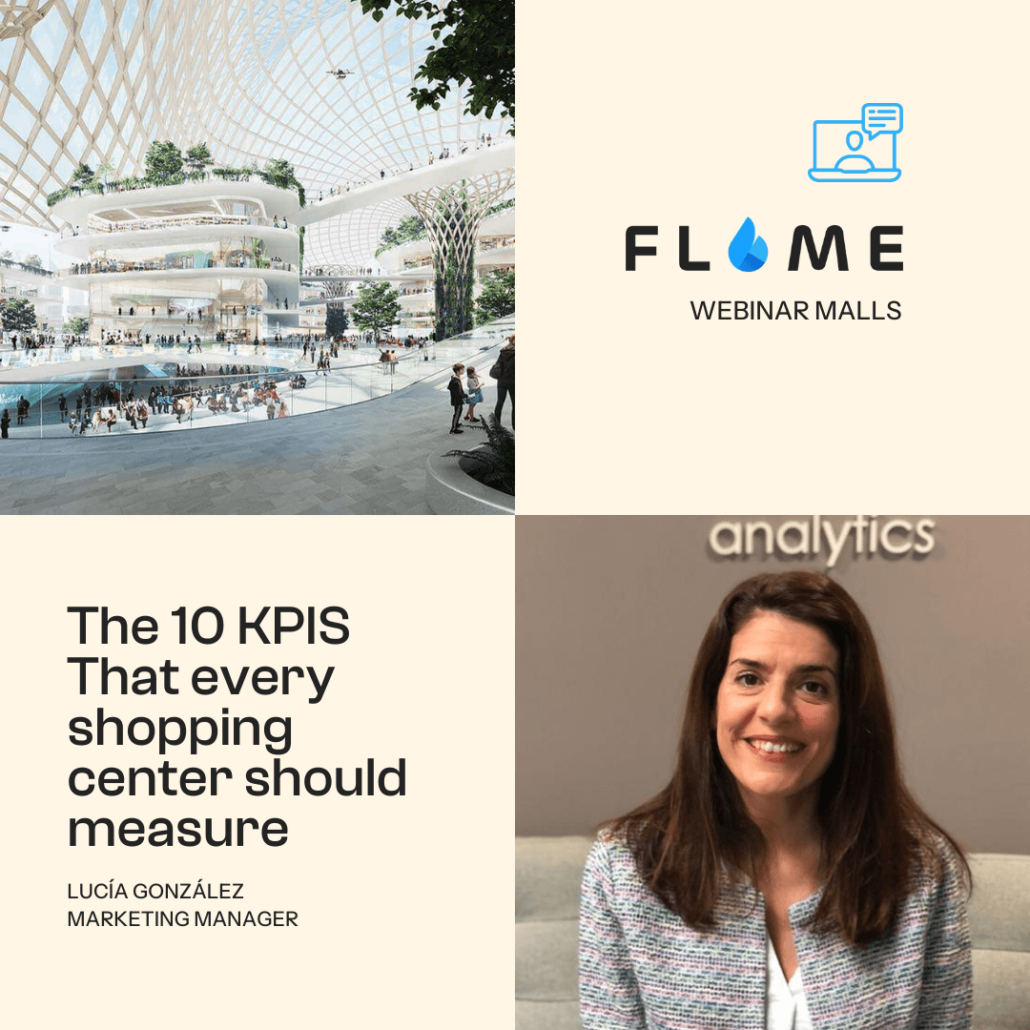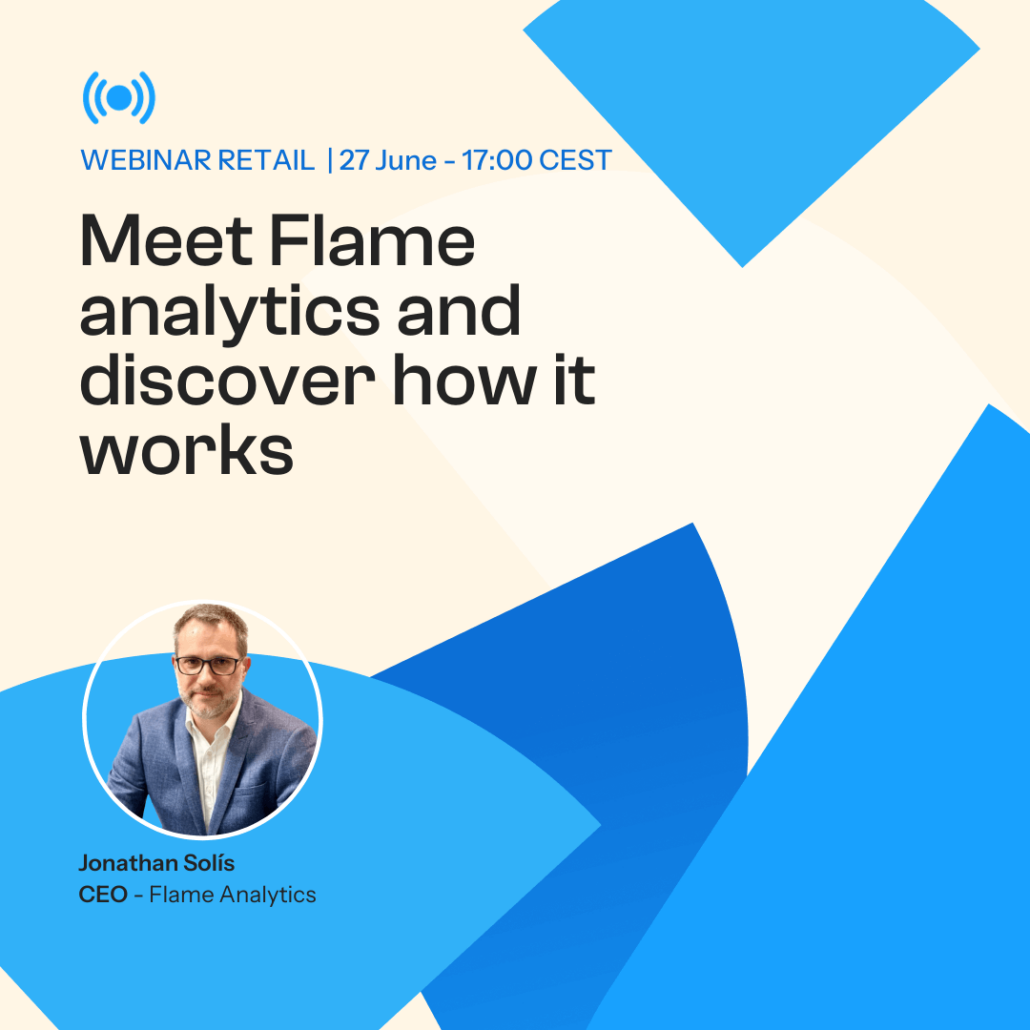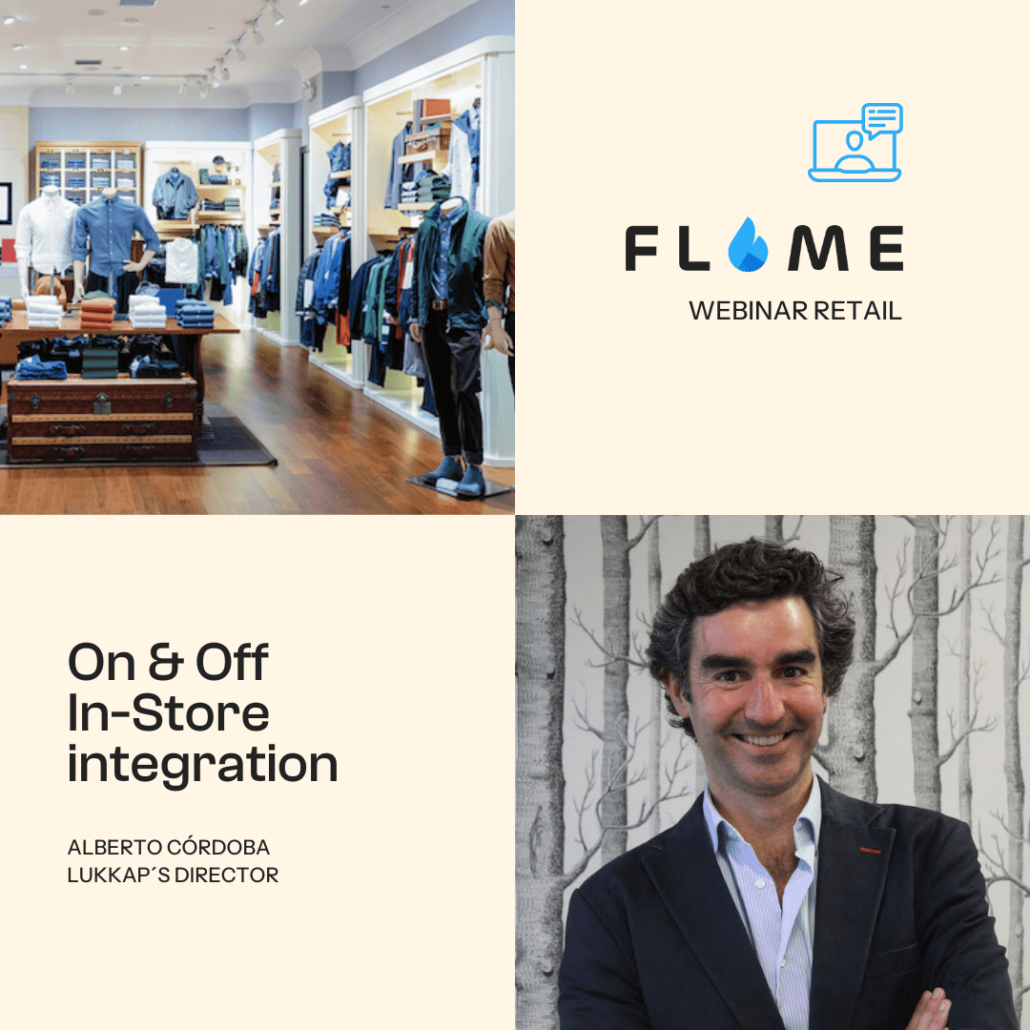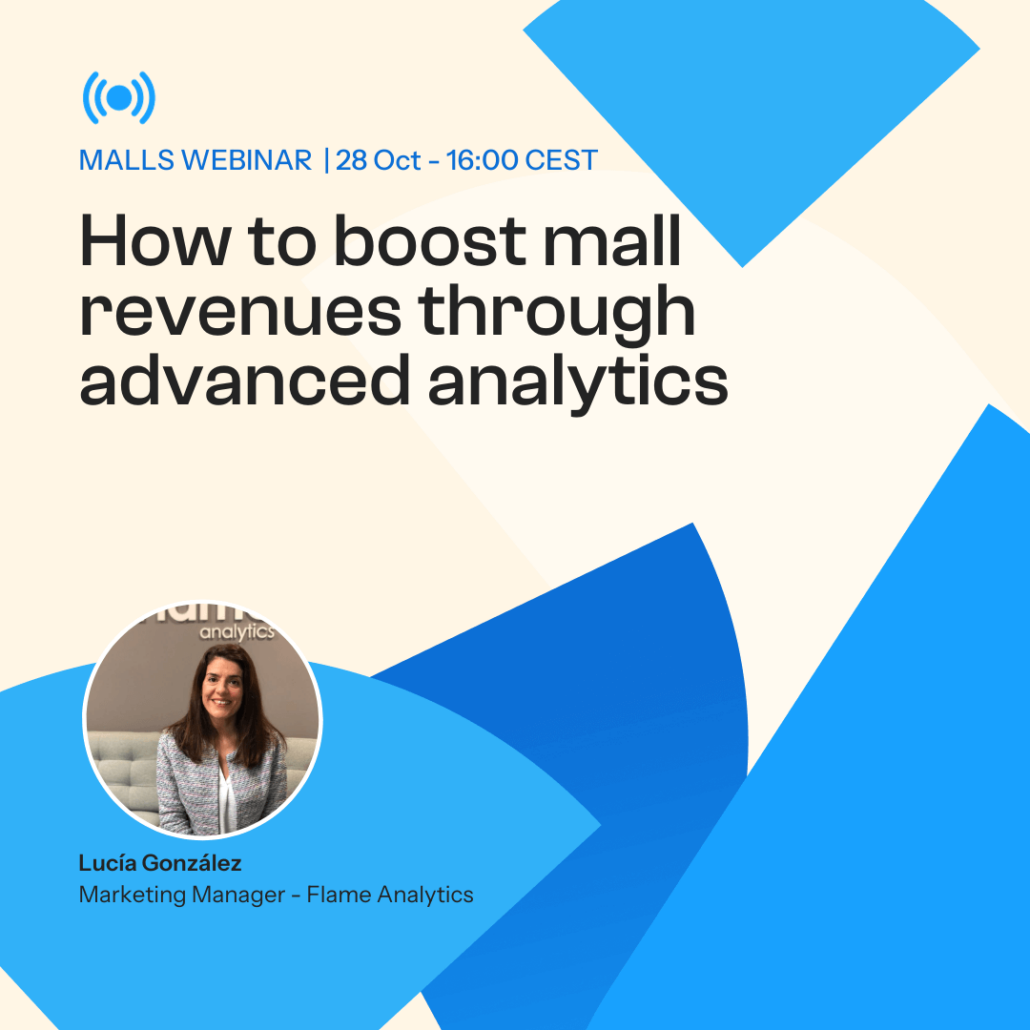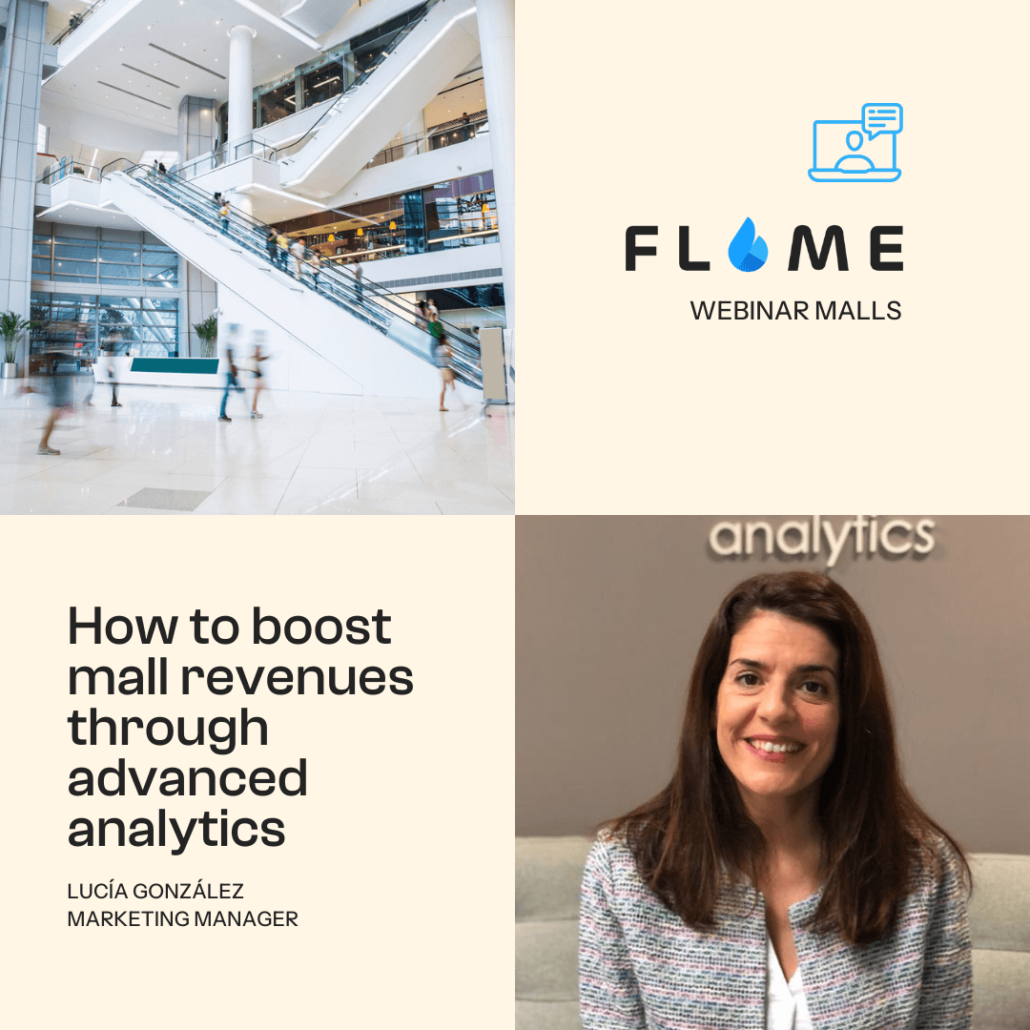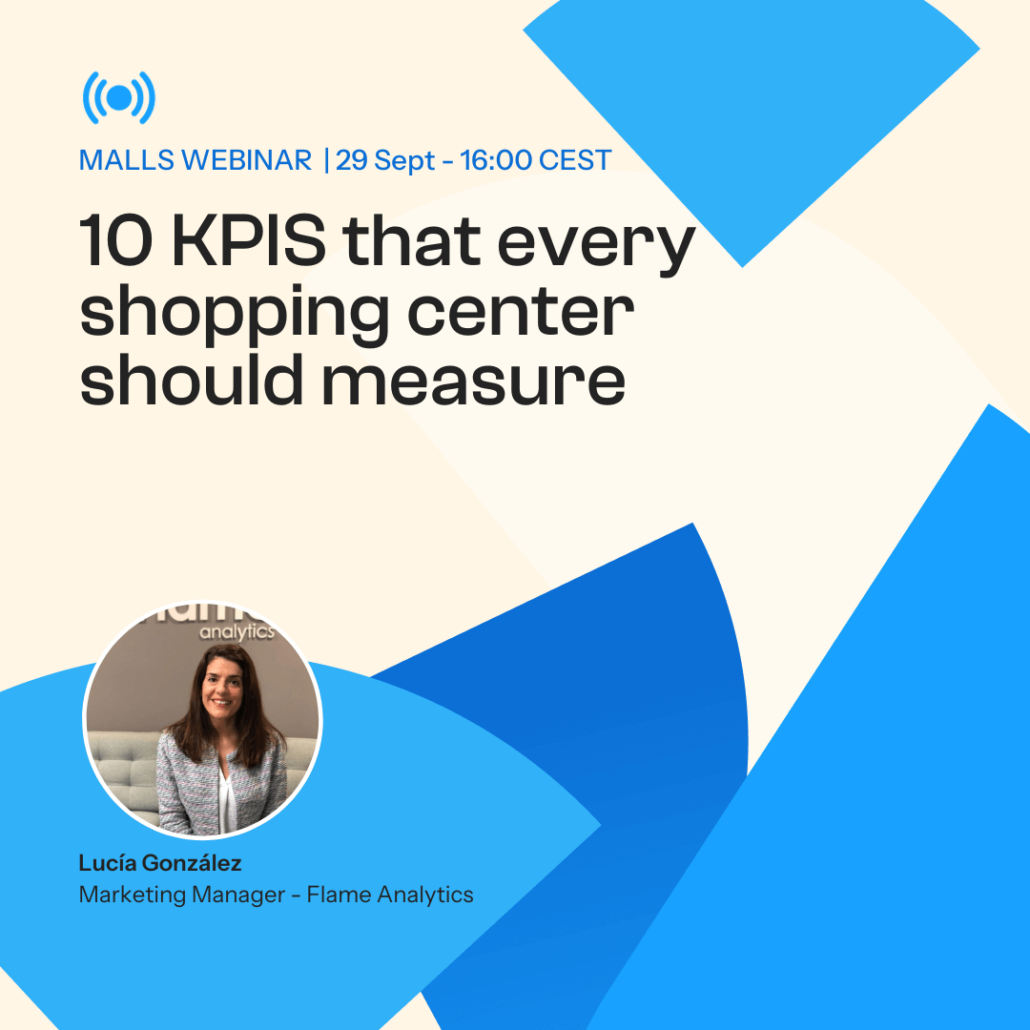In this webinar we talked about the 10 kpis that you must measure in your shopping center in order to be successful. You all know that measuring is essential nowadays. It is the only way to know if what you are doing in your business is good, bad or needs improvement. But the question is: What things should I measure?
There are hundreds of options, hundreds of kpis at our disposal. But what are the essentials? Which ones are really going to help us?
In this webinar addressed this topic and told you, from our point of view and from our extensive experience with shopping centers, what are the 10 KPIS that should be measured in a shopping center. All this with one goal: To be a successful shopping center, a digitized center that offers unique and memorable experiences to its customers, of course, a center that knows them and knows how to create customer loyalty.
And with that said, let’s get started!
A new consumer
Firstly, we have to reflect on the purchasing habits of customers, which have changed in recent years.
First of all, e-commerce has grown exponentially and the trend is for it to continue to do so. In addition, we are all highly digitized and looking for unique experiences. The client is no longer interested in the “machine gun type” emails. They are looking for something personalized, unique and, in some way, omnichannel.
And in this context, many of you will ask yourselves, where is traditional retail? Is it destined to disappear? The answer is no. More than 85% of total retail is still physical, so a disappearance is unthinkable. However, we must help physical retail change and evolve to the challenges of the new times.
And what are these challenges?
At Flame we believe that the key is to digitize physical spaces (in this case, shopping malls) in order to get to know the customer better and offer them unique and memorable omnichannel experiences.
We are aware of everything that the online world gives us: exact data through Google Analytics, traffic metrics, dwell times, loyalty data and the possibility of creating unique marketing experiences that make a difference.
Flame’s mission since its inception has been to transfer all these technologies to the physical world, making the points of sale spaces smarter and improving the customer experience.
To do this, we have set 4 main objectives in terms of shopping centers:
- Measure customer behavior in the shopping center and act in response to the results obtained.
- Know the behavior of our customers.
- Connect with them.
- Deliver unique and memorable experiences.
Which 10 KPIs can we measure in a shopping center?
There are 10 fundamental KPIs that have to be measured in a shopping center. All of them are integrated with a different sensor technology, however, almost all of them can be measured through WiFi technology or people counting cameras.
They are the following:
1. Number of visits
That is, the traffic of the shopping mall that will be measured through people counting technology. (Most shopping centers already have these systems).
Use cases. Measuring the visits obtained will help us to know the traffic by days, hours or weeks. We will also be able to know the performance or contribution by doors and discover traffic patterns to be able to draw predictions or make comparisons between centers.
Benefits. Measuring influxes will provide us with greater efficiency by managing our staff optimally, we will improve the marketing of the point of sale by carrying out, for example, campaigns at peak hours, we will measure the conversion to sale and we will know if we are capable of obtaining “reporting” from our tenants as well as improving attraction campaigns by measuring their success.
2. Unique visitors
We will measure the number of unique visitors through Wi-Fi analytics. . This is one of the most interesting KPI’s since the visit metric, seen in the previous point, is often “inflated” and provides us with erroneous data (for example, the staff, a user is counted more than once or it counts visits of minimum duration). Therefore, the measurement of unique visitors is of special importance for optimal data collection.
Use cases. First of all, measuring unique visitors will help us study the center’s capture rate. A shopping center located on the outskirts supposes a displacement of the client specifically to visit it. The more unique visitors the center has, the greater its capture will be. Secondly, it will help us study the attribution to sales, that is, if we maximize the number of unique visitors, we will be able to see to what extent this has an impact on sales. We will also be able to know the characterization of the different centers and, in case of having more than one shopping center, see which of them is frequented more by recurring visitors.
Benefits. Know data on the acquisition of new customers and real “not inflated” information.
3. Traffic by zones
It is very similar to the previous point, but this time we will obtain the information by areas. A tool like Flame allows you to upload shopping center layouts to the platform, create zones and be able to measure them.
Use cases. In the first place, we will be able to know the level of opportunity by zones. Here the number of visits to each zone will be counted. Secondly, to know the level of capture per zone, knowing the number of unique visitors.
In addition, we will be able to make comparisons between zones, know which are the ones that receive the most traffic, their peak hours, etc. Finally, we will be able to carry out marketing strategies by area and leasing strategies based on traffic.
Benefits. An improvement in capture by area and in business sales.
4. Repetition rate
It gives us a segmented idea of how many times users return. From here we obtain other metrics such as frequency (number of times a person can repeat in a time interval) or recency (KPI that measures the average visit time). In turn, this allows us to segment the traffic obtained into different groups, for example, people who come on weekends, those who repeat every day, etc.
Use cases. This KPI will allow us to characterize the center and study the attribution to be able to carry out marketing actions for those who repeat: for example, reward loyalty with exclusive services, priority attendance at events or personalize marketing actions.
Benefits. From generating a more loyal clientele knowing the rate of return to improving conversion rates and profitability for certain businesses. For example, if I am aware that a client returns every day, I might be interested in redirecting them to the restaurant sector.
5. Dwell time in the center
Use cases. It is interesting to know the length of stay because this will allow us to know what type of center we have or how this fact influences the attribution to sales.
We will also be able to segment customers by the duration of their visit and carry out marketing actions for them based on the period of their stay. Likewise, we will be able to encourage the extension of the visits in hours or measure the impact that some campaigns are having in the center. An example of this last characteristic could be a situation where we have short-term visits and we may be interested in carrying out some type of campaign.
Benefits. Measuring the length of stay is closely related to customer engagement, which we can improve and thus increase sales.
6. Dwell times by zone
Closely related to the previous section but this time by zone.
Use cases. Knowing the length of stay by zone will allow us to carry out changes and campaigns in areas that influence the length of stay and engagement or attribution to sales at the center.
Benefits. Improve the engagement of the center by zone, increasing sales and optimizing the customer experience. The situation may arise in which users spend less time in one area than in another, so a marketing strategy could be carried out to improve this situation and influence people to visit other zones.
7. Hot spots/cold spots
It helps us to know in a graphic way what is the movement of the center’s visitors.
Use cases. Measuring and knowing which are the hot and cold zones of our shopping center will allow us to optimize leasing strategies or make changes in the center to distribute more traffic. We will also have objective data in order to carry out campaigns in certain areas or to adapt product layouts.
Benefits. The optimization of the distribution, the improvement of the layouts and the different decorative or architectural elements, as well as the optimization of the customer experience.
8. Flows of movement
This KPI has a significant impact on day-to-day management and allows us to understand the complete customer journey of our clients. We will be able to know where they enter and what their route is between the different zones, obtaining data as important as the correlation between zones.
Use cases. Knowing the movement flows will help us carry out a relocation of businesses or location of promotional elements according to the relationship between the different areas. We will also be able to know the characterization of the center, since we can have visits that only cross the center of one door to go out to another (this can happen in an urban center) giving rise to passing visits that we can take advantage of with promotional elements.
Benefits. Present useful information to center tenants, improve customer experience, learn about traffic patterns and behavior.
9. The gender and age range of the clients
This demographic KPI can currently be carried out in three ways: On the one hand, through demographic cameras located at the entrance of the establishment, which have high precision for gender and medium-high precision for determining age range. In addition, this information can be observed by days, hours…
On the other hand, through the purchase of big data services that various mobile companies are making available to people who are inside the center or in its surroundings.
Finally, and as most of our clients have, through the guest Wi-Fi. In this case, we will be able to know the gender and age by asking the client directly through the connection form or through a social log-in (via Facebook, Twitter, Instagram…)
Use cases. Knowing the gender and age of our customers will allow us to personalize our marketing actions betting on different acts according to the gender and age groups we want to reach.
Likewise, it will help us plan the leisure and events offer, for example, directing family traffic to a certain area of the center, evaluating whether it is worthwhile to hold events for children in the case that we notice a high presence of them, etc.
Finally, this data will help us to characterize the centers by segmentation of the public that frequents them the most.
Benefits. Communicate in a more segmented way and better understand the changes in the sociodemographic profiles of visitors over time.
10. Customer profiles
Maybe this is not really a KPI but it is very important information. The customer profile is a set of data that we can use in different ways. For example, we can launch a campaign for young women who visit us once a week and whose birthday is in February, another for people who have not visited our center for a month and who we want them back, etc. Therefore, we will be able to create these segmented profiles, launch campaigns and measure their impact and attribution.
Use cases. With this information we will be able to personalize marketing actions, create segmented campaigns or measure the attribution of campaigns.
Benefits. Know more about our client, enrich our CRM, improve their experience, increase their engagement, loyalty and, of course, sales.
Objective: 10 KPIS about your Customer Journey
All the KPIs mentioned are related to the customer journey in a shopping center. In the first place, the center’s traffic, which has to do with visits, unique visits, stay times or the percentage of repetition.
Secondly, the traffic by zones related to visits by zones and, thirdly, the specific traffic of each store measured with a people counter. Finally, one last step (which we could do as long as the tenants share the data with us), that of measuring sales and the conversion rate.
If you want more information and want to start measuring these KPIs, we invite you to learn more about Flame Analytics, a big data solution that applies Artificial Intelligence to offer analytics and omnichannel marketing tools.
